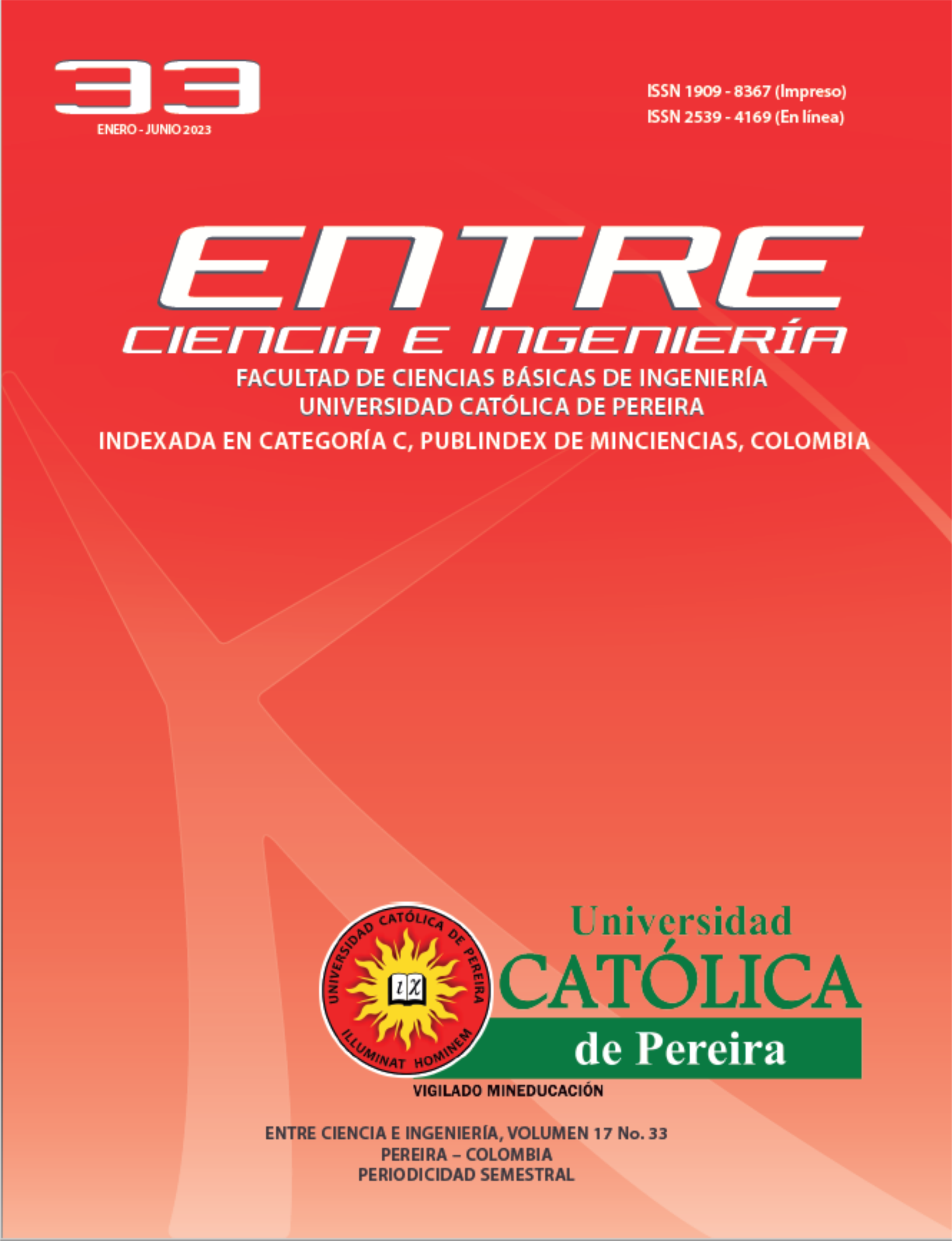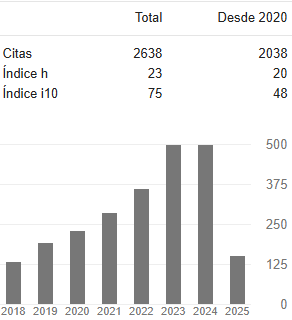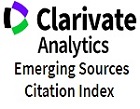El núcleo de la Esencia de SEMAT como base de representación de conocimiento en Ingeniería de Software
DOI:
https://doi.org/10.31908/19098367.2941Resumen
En la actualidad las tecnologías usadas para la economía, la comunicación, la industria, el entretenimiento, la educación, entre otras, requieren la implementación de sistemas de cómputo controlados por software [1]. Cada día se genera una dependencia más estrecha entre el software y los procesos que buscan mejorar la calidad de vida de la población [2], [3]. La Ingeniería de Software es una disciplina que se relaciona con la investigación, evaluación, análisis, diseño, construcción, implementación y gestión de sistemas de software [4]. El objetivo principal de esta rama de la ingeniería es permitir a los profesionales construir software de calidad mediante la implementación de un proceso de desarrollo basado en una colección de métodos y una serie de herramientas [5].
Descargas
Referencias
J. C. Blandón, “Tendencias en ciencias de la computación”, Entre Cienc. E Ing., vol. 14, núm. 27, pp. 19–28, jul. 2020, doi: 10.31908/19098367.1740.
F. F. Tsui, O. Karam, y B. Bernal, Essentials of software engineering, Fourth edition. Burlington, MA, USA: Jones & Bartlett Learning, 2018.
C. M. Medina Otalvaro, J. C. Blandón Andrade, C. M. Zapata Jaramillo, y J. I. RiosPatiño, “IoT Best Practices and their components: A Systematic Literature Review”, IEEE Lat. Am. Trans., vol. 20, núm. 10, pp. 2217–2228, oct. 2022, doi: 10.1109/TLA.2022.9885169.
E. C. Foster y B. A. Towle Jr., Software engineering: a methodical approach, 2a ed. Boca Raton, FL, USA: CRC Press, 2021.
R. S. Pressman y B. R. Maxin, Software engineering: a practitioner’s approach, 8a ed. New York, NY, USA: McGraw-Hill Education, 2015.
J. C. Blandón Andrade, K. E. Castaño Gil, y J. E. Tibaquirá Giraldo, “Development of a Computational Tool to Evaluate the Energy Diversification of Transportation Systems in Colombia”, Rev. Científica Ing. Desarro., vol. 40, núm. 2, pp. 166–186, jul. 2022, doi: 10.14482/inde.40.02.620.986.
I. Jacobson, H. Lawson, P.-W. Ng, P. E. McMahon, y M. Goedicke, The Essentials of Modern Software Engineering. Association for Computing Machinery, 2019. doi: 10.1145/3277669.
I. Jacobson, B. Meyer, y R. Soley, “Software Engineering Method and Theory”, 2009. http://www.semat.org/ (consultado el 27 de febrero de 2022).
I. Jacobson, P.-W. Ng, I. Spence, S. Lidman, y P. McMahon, “La Esencia de la Ingeniería de Software: El Núcleo de Semat”, Rev. Latinoam. Ing. Softw., vol. 1, núm. 3, pp. 71–78, 2013, doi: 10.18294/relais.2013.71-78.
Object Management Group, “Essence-Kernel and language for software engineering methods”, julio de 2018. https://www.omg.org/spec/Essence/ (consultado el 17 de julio de 2021).
C. M. Medina Otalvaro, “Representación formal de mejores prácticas de IoT con base en los elementos del núcleo de la Esencia SEMAT”, MSc Thesis, Universidad Tecnológica de Pereira, Pereira, Colombia, 2023.
M. C. Gómez-Álvarez, R. Sánchez-Dams, y Á. A. Barón-Salazar, “A Representation Proposal of Practices for Teaching and Learning Software Engineering Using a Semat Kernel Extension”, Rev. Ing. Univ. Medellín, vol. 17, núm. 32, pp. 129–154, jun. 2018, doi: 10.22395/rium.v17n32a7.
J. C. Hernández Palencia, “Prácticas de ludificación en el desarrollo de software representadas en el núcleo de SEMAT”, M.S. thesis, Universidad Nacional de Colombia, Medellín, Colombia, 2018. Consultado: el 28 de marzo de 2022. [En línea]. Disponible en: https://repositorio.unal.edu.co/handle/unal/69399
C. M. Zapata Jaramillo, G. V. Maturana-Gonzalez, y J. M. Calle-Gallego, “A Board Game to Simulate the Software Development Process Based on the SEMAT Essence Standard”, en 2020 IEEE 32nd Conference on Software Engineering Education and Training (CSEE&T), Germany: Institute of Electrical and Electronics Engineers, nov. 2020, pp. 1–4. doi: 10.1109/CSEET49119.2020.9206177.
G. G. Ibarguengoitia y H. Oktaba, “Use of the Essence and Kuali-Beh to Structure Software Engineering Courses”, en 2016 4th International Conference in Software Engineering Research and Innovation (CONISOFT), Puebla, Mexico: Institute of Electrical and Electronics Engineers, abr. 2016, pp. 47–52. doi: 10.1109/CONISOFT.2016.16.
J. O. Muñoz Rengifo, “Equipos de desarrollo de software: sus prácticas representadas en Semat”, M.S thesis, Universidad Nacional de Colombia, Medellín, Colombia, 2015. Consultado: el 28 de marzo de 2022. [En línea]. Disponible en: https://repositorio.unal.edu.co/handle/unal/56219
M. E. González-Pérez, C. M. Zapata-Jaramillo, y L. González-Palacio, “Toward a standardized representation of RUP best practices of project management in the SEMAT kernel”, Softw. Eng. Methods Model. Teach., vol. 3, pp. 47–52, 2014.
C. M. Zapata, G. L. Giraldo, y L. D. Jiménez, “Ontological representation of the graphical language of Semat”, en 2014 9th Computing Colombian Conference (9CCC), sep. 2014, pp. 137–143. doi: 10.1109/ColumbianCC.2014.6955360.
D. Quintanilla-Perez, A. Mauricio-Delgadillo, y D. Mauricio-Sanchez, “Essboard: a collaborative tool for using Essence in software development”, en 2019 IEEE 10th International Conference on Software Engineering and Service Science (ICSESS), Beijing, China: IEEE, oct. 2019, pp. 20–23. doi: 10.1109/ICSESS47205.2019.9040832.
D. M. Torres Ricaurte, “Formulating a theory about interoperability among heterogeneous software systems, based on the Semat kernel”, ago. 2019, Consultado: el 17 de julio de 2021. [En línea]. Disponible en: https://repositorio.unal.edu.co/handle/unal/76654
D. M. T. Torres Ricaurte y C. M. Z. Zapata Jaramillo, “Best practices of interoperability among heterogeneous software systems: a Semat-based representation”, Fac. Ing., vol. 26, núm. 44, pp. 155–164, 2017.
C. E. Durango Vanegas y C. M. Zapata Jaramillo, “Una representación basada en Semat y RUP para el Método de Desarrollo SIG del Instituto Geográfico Agustín Codazzi | Ingenierías USBMed”, Ing. USBMed, vol. 6, núm. 1, jun. 2015, doi: 10.21500/20275846.1721.
C. E. Durango Vanegas, “Definición de buenas prácticas de desarrollo de sistemas de información geográfica utilizando el núcleo de Semat”, jul. 2019, Consultado: el 23 de noviembre de 2022. [En línea]. Disponible en: https://repositorio.unal.edu.co/handle/unal/76563
C. E. Durango, M. Amariles, J. Giraldo, C. M. Zapata Jaramillo, C. Díaz, y C. Zapata, “Representación en el núcleo de Semat de las competencias de Ingeniería Social necesarias para mejorar la Seguridad Informática”, en Proceedings of the Latin American Software Engineering Symposium, Bogotá, Colombia, nov. 2015, pp. 41–56.
W. Dahhane, T. Bouchentouf, y M. Rahmoun, “SEMAT Essence’s Kernel applied to O-MaSE”, en 2016 5th International Conference on Multimedia Computing and Systems (ICMCS), Marrakech, Morocco: Institute of Electrical and Electronics Engineers, sep. 2016. Consultado: el 10 de julio de 2023. [En línea]. Disponible en: https://ieeexplore.proxyutp.elogim.com/document/7905565/
C. C. Andreas y Y. Widyani, “Essence-based Method Chunk Composition”, en 2019 International Conference on Data and Software Engineering (ICoDSE), Pontianak, Indonesia: IEEE, nov. 2019, pp. 1–6. doi: 10.1109/ICoDSE48700.2019.9092736.
Descargas
Publicado
Número
Sección
Licencia
Derechos de autor 2023 Entre Ciencia e Ingeniería

Esta obra está bajo una licencia internacional Creative Commons Atribución-NoComercial 4.0.



















